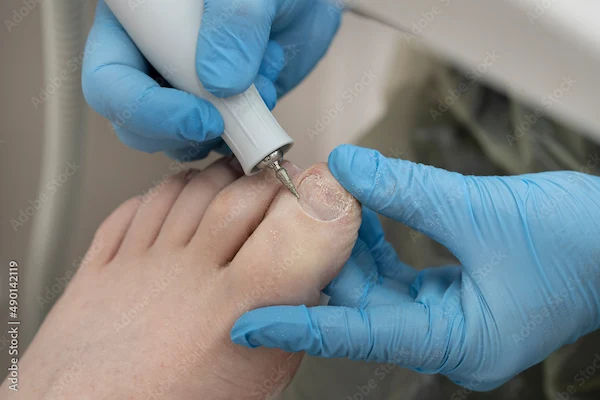What Leads To Signs Of Fungal Infection Types And
Learn about the common causes, risk factors, and various signs associated with different types of fungal infections, from athlete's foot to systemic mycoses. Identify the factors that lead to these uncomfortable conditions.


Introduction
Fungal infection types range from common skin rashes to serious illnesses that need urgent care. Because fungi thrive in warm, moist spots, places like the feet, groin, skin folds, and nails are frequent targets. You might have heard of athlete’s foot, ringworm, jock itch, oral thrush, or toenail fungus—these are all fungal infections. While many are mild and manageable with over‑the‑counter creams, others can persist, spread, or come back if the root cause isn’t addressed. Certain people—such as those with diabetes or weakened immunity—face higher risks.
In this guide, you’ll learn what leads to fungal infection types, how to spot signs early, and what to do when symptoms don’t improve. We’ll cover causes and risk factors, symptoms by body area, how fungi spread, diagnosis options, and treatments. You’ll also get practical prevention tips for humid climates and active lifestyles. If symptoms persist beyond two weeks, consult a doctor online with Apollo 24|7 for further evaluation. Let’s help you tell fungal infections apart from look‑alike conditions and keep recurrences at bay.
What Are Fungal Infections?
Fungal infections occur when fungi—dermatophytes, yeasts, or molds—grow on or in the body. Most infections are superficial, meaning they involve skin, hair, or nails. Dermatophytes cause “tinea” infections such as athlete’s foot and ringworm; yeasts like Candida cause oral thrush, vaginal yeast infections, and intertrigo in skin folds. In people with weakened immune systems, fungi can invade deeper tissues, causing invasive disease, which is far more serious and less common.
Fungi thrive in warm, moist environments. That’s why tight footwear, sweaty gym sessions, humid climates, or skin folds are frequent trouble spots. Everyday habits—like re‑wearing damp socks or staying in wet swimwear—create conditions fungi love. The good news: most superficial fungal infections are manageable with over‑the‑counter antifungals if caught early and treated correctly. The challenge: fungi can be persistent, returning if you stop treatment too early or don’t address root causes such as moisture and friction. Unique insight: think of fungi as opportunists that exploit micro‑environments; your goal is to “redecorate” those environments (drier, cooler, more breathable) to make them unfriendly to fungal growth.
The Most Common Fungal Infection Types
An athlete's foot (tinea pedis) often starts between the toes with itching, peeling, burning, or small blisters. It can spread to the toenails (onychomycosis) or to the hands. Jock itch (tinea cruris) causes a red, itchy rash in the groin and inner thighs. Ringworm (tinea corporis) on the trunk or limbs classically forms a ring‑shaped, scaly border with central clearing; scalp ringworm (tinea capitis) can lead to patchy hair loss and sometimes a painful, swollen lesion called a kerion.
Yeast infections, usually caused by Candida, include oral thrush (white, cottage cheese‑like patches in the mouth), vaginal candidiasis (itching, thick discharge), and intertrigo in skin folds (red, macerated rash with satellite pustules). Nail infections (onychomycosis) cause nail discoloration, thickening, and brittleness; toenails are more often affected due to slower growth and warm, moist environments within shoes. Unique insight: nails and scalp often need prescription therapy and longer durations because fungi “hide out” in hard‑to‑reach structures (nail plates, hair follicles), so OTC creams that work on skin may underperform on nails and scalp.
Consult a Top General Physician
What Leads to Fungal Infections? Causes and Risk Factors
Fungi exploit moisture, warmth, and micro‑abrasions. Common triggers include sweaty workouts, tight or non‑breathable footwear, synthetic fabrics, prolonged dampness (e.g., sitting in wet swimwear), and friction in skin folds. Community exposures—locker rooms, shared showers, pool decks, yoga mats, and nail salons—add risk through contaminated surfaces. Pets, especially kittens and puppies, can carry ringworm.
Medical and medication factors matter. Antibiotics can disrupt your normal bacterial flora, giving Candida an opening to overgrow. Topical or oral steroids suppress local immunity and may worsen or mask fungal rashes; steroid‑antifungal combinations can make “tinea incognito,” a rash that looks less typical but spreads more widely. Diabetes and high blood sugar support Candida growth; obesity increases skin‑fold friction and moisture; older age slows nail growth, favoring persistent onychomycosis. Immune suppression—due to conditions or medications—raises risk for extensive or invasive infections. Unique insight: think “triple M” risk—Moisture, Microtrauma (friction), and Microbiome disruption (antibiotics/steroids). Minimizing all three reduces both onset and recurrence.
Signs and Symptoms: How to Recognize Fungal Infections?
Fungal infections can be recognized by a variety of distinct symptoms, which often depend on the location of the infection:
- General/Typical Signs:
- Itching, burning, or stinging sensation on the skin.
- Scaling or flaking of the skin.
- Cracking or splitting of the skin (fissures).
- Ringworm (Tinea): Presents as a ring-shaped red border with clearer, often scaly, skin in the center.
- Specific Location Signs:
- Athlete’s Foot (Tinea Pedis): May show maceration (soft, white, soggy skin) between the toes or dry, fine, "moccasin-
type" scaling covering the soles of the feet. - Jock Itch (Tinea Cruris): Affects the groin folds and typically spares the scrotum.
Yeast Intertrigo (Skin Folds): Appears as a beefy-red rash with small, separate red spots or pustules ("satellite lesions") at the margins. - Oral Thrush (Mouth): Characterized by white plaques on the tongue, cheeks, or throat that may wipe off to reveal a
red, sore, or bleeding underlying mucosa. - Nail Fungus (Onychomycosis): Causes the nail to become thick, brittle, discolored (often yellow-brown), and sometimes distorted.
- Athlete’s Foot (Tinea Pedis): May show maceration (soft, white, soggy skin) between the toes or dry, fine, "moccasin-
- Look-Alikes to Consider:
- Fungal rashes can be mistaken for: eczema, psoriasis, contact dermatitis, or bacterial infections (e.g., impetigo or cellulitis).
- Clues for Fungi: The rash often has a scaly, actively advancing border. A rash that initially improved with a steroid
cream but then worsened or spread is also highly suggestive of a fungal infection.
- Red Flags (When to Seek Immediate Care):
- Presence of fever.
- Rapidly spreading redness or warmth (possible bacterial superinfection).
- Severe pain or pus.
- Extensive or large-area rashes.
- Rashes occurring in infants or immunocompromised individuals.
- Symptoms that persist beyond two weeks of self-care.
How Fungi Spread and Grow?
Fungi spread through direct skin‑to‑skin contact, indirect contact via shared items (towels, shoes, clippers), and contaminated surfaces (locker rooms, mats). Pets can transmit ringworm, and untreated household members can perpetuate reinfection cycles. Humidity, sweating, occlusive footwear, and tight clothing create the microclimates fungi prefer.
Biofilms—protective layers microbes can form—may contribute to nail and device‑related infections, making them harder to clear. Recurrence often stems from incomplete treatment, skipping maintenance hygiene, reinfection from contaminated shoes or socks, and not treating all affected sites (e.g., feet and shoes together). Unique insight: treat “systems,” not just skin. For athletes’ feet, decontaminate footwear (antifungal sprays/powders, UV shoe sanitizers), rotate shoes to allow drying, and wash socks hot to disrupt the environment that fosters fungal growth.
When to See a Doctor and How Diagnosis Works?
If a rash is unclear, worsening, or not improving after 1–2 weeks of OTC antifungal use, medical evaluation helps confirm the cause. Clinicians may do a KOH (potassium hydroxide) prep: gently scraping scales onto a slide to look for fungal elements under a microscope. Fungal culture, PCR testing, or a Wood’s lamp exam might be used in specific cases (e.g., scalp infections, certain species that fluoresce). Nail clippings can be sent for microscopy and culture when the diagnosis is uncertain.
Escalation is appropriate when the rash is extensive, involves hair or nails, recurs frequently, or occurs in high‑risk patients. Persistent thrush or recurrent vaginal yeast infections may warrant screening for diabetes, HIV, or other immune issues. Apollo 24|7 offers convenient home collection for tests like HbA1c if recurrent infections raise concern for blood sugar issues. If symptoms persist beyond two weeks, consult a doctor online with Apollo 24|7 for further evaluation, or book a physical visit if the area is severe or painful.
Treatment Options That Work
Topical antifungals are the first‑line for most skin infections. Azoles (clotrimazole, miconazole, ketoconazole) are broad‑spectrum and often affordable. Allylamines (terbinafine, naftifine) may clear dermatophyte infections more quickly in some cases. Apply 1–2 times daily, extending treatment 1–2 weeks beyond symptom resolution to prevent relapse. Avoid steroid‑only creams for undiagnosed rashes; steroid combinations can mask and worsen fungal infections (“tinea incognito”).
Oral antifungals are used for hair/scalp, nails, extensive skin disease, or when topical therapy fails. Options include terbinafine, itraconazole, fluconazole, or griseofulvin for tinea capitis. Nails often require weeks to months of therapy plus nail care. Adherence matters: stopping early risks of recurrence and resistance.
Home Care and Prevention Strategies
Daily routines that keep skin dry and intact are powerful:
- Dry thoroughly after bathing, especially between toes and in skin folds; use a clean towel each time.
- Use an absorbent, non‑medicated powder (e.g., zinc/silica) for moist areas; consider antifungal powder for feet if prone
to athlete’s foot. - Wear breathable, moisture‑wicking socks and underwear; change out of damp clothes promptly.
- Rotate shoes to allow 24 hours of drying; use antifungal sprays or UV sanitizers in footwear.
- Wash socks, towels, and gym wear in hot water; dry on high heat.
- Wear sandals in communal showers; avoid sharing towels, razors, nail clippers.
Household/gym hygiene: wipe down gym equipment, yoga mats, and bathroom floors regularly; clean pet bedding if ringworm is suspected; consult a vet to treat infected pets. Unique insight: a cool‑setting blow‑dryer can help dry between toes or skin folds before applying antifungal creams—just don’t overheat the skin.
Special Situations and Sensitive Groups
Children often get scalp ringworms from classmates or pets. Treatment typically requires prescription oral antifungals plus antifungal shampoo to reduce transmission. Athletes face repeated moisture and friction; building a “drying routine” after training can cut recurrences significantly.
Pregnancy requires caution; many topical antifungals are considered low‑risk but always check with your clinician for fungal infection in pregnancy safe treatments. For people with diabetes, optimizing blood sugar is central; skin checks and foot care help prevent ulcers and secondary infections. Older adults may have persistent nail fungus due to slow nail growth and circulation changes; nail trimming, footwear changes, and longer therapy may be needed. Immunocompromised individuals should seek prompt evaluation for new rashes or oral thrush. If symptoms persist beyond two weeks, consult a doctor online with Apollo 24|7.
Complications and When Fungal Infections Turn Serious?
Untreated or severe fungal skin infections can crack the skin barrier, allowing bacteria to enter and cause cellulitis—a painful, red, warm swelling that needs urgent care. Nail fungus may lead to pain, ingrown nails, or secondary infections, especially in diabetes. Scalp ringworm can cause kerion, a boggy inflammatory mass that risks scarring hair loss if not treated promptly.
Globally, drug‑resistant fungi (e.g., Candida auris) are an emerging threat in healthcare settings, underscoring the importance of accurate diagnosis and appropriate antifungal use. While most community skin infections are manageable, misuse of steroid‑antifungal mixes and stopping treatment early may contribute to persistence and resistance. Unique insight: think in phases—induction (clear the infection), consolidation (continue after symptoms fade), and maintenance (hygiene/environment control)—to reduce relapse. Seek care promptly if you develop fever, spreading redness, significant pain, or if you are immunocompromised.
Myths vs Facts: Steroids, “Natural Cures,” and Quick Fixes
- Myth: Steroid creams fix most rashes. Fact: They can worsen undiagnosed fungal infections and mask symptoms, causing wider spread.
- Myth: Vinegar, bleach, or essential oils alone cure fungus. Fact: Some may irritate skin or be unsafe; evidence is limited. Use clinician‑recommended regimens.
- Myth: If the itch stops, you’re cured. Fact: You must treat for the full recommended duration to kill residual fungi and
prevent recurrence.
Seasonal and Environmental Factors
Hot, humid weather, monsoons, and tropical travel increase risk. Gyms, team sports seasons, and long hours in boots (e.g., certain occupations) create microclimates for fungi. Adjust routines seasonally: more frequent sock changes, powder in shoes, and breathable fabrics during warmer months; ensure boots dry thoroughly in cooler, wetter seasons.
Diet, Immunity, and the Skin Microbiome
No single “anti‑fungal diet” treats skin fungus, but overall metabolic and immune health matters. Balanced nutrition supports healing; high sugars may worsen Candida overgrowth in some contexts, especially with diabetes. The skin microbiome—healthy bacteria living on your skin—acts as a natural defense; harsh cleansers and unnecessary antibiotics may disrupt it. Unique insight: simple practices like gentle cleansers, moisturizing after bathing (to protect the barrier), and targeted, necessary antibiotics can support the microbiome and reduce fungal footholds. If recurrent yeast infections persist, discuss screening (e.g., HbA1c) with your clinician; Apollo 24|7 offers a convenient home collection for tests like HbA1c.
Safe Use of Home Remedies—and What to Avoid?
Some people use adjuncts like diluted vinegar soaks for athlete’s foot or tea tree oil products. Evidence is mixed; some preparations can irritate or worsen dermatitis, making diagnosis harder. Avoid undiluted essential oils, bleach, or caustic agents on skin. Do not use steroid combinations without a diagnosis. Unique insight: if you try an adjunct, patch test first, limit to intact skin, and continue proven antifungals. If irritation or worsening occurs, stop and seek care. If your condition does not improve after trying these methods, book a physical visit to a doctor with Apollo 24|7.
Community and Household Measures: Pets, Shared Spaces, Travel
- Pets: If ringworm is suspected, have pets examined and treated; disinfect bedding and grooming tools.
- Shared spaces: Use sandals in locker rooms, bring your own yoga mat or disinfect rental mats, and avoid sharing towels/clippers.
- Travel: Pack breathable footwear and quick‑dry socks; rotate shoes; launder gear promptly.
Conclusion
Fungal infections are common and usually manageable when you tackle both the skin and the environment where fungi thrive. Understanding what leads to fungal infection types—moisture, friction, and microbiome disruption—helps you prevent and treat them more effectively. Recognize the signs early, choose the right antifungal, and stick with treatment long enough to fully clear the infection. Pair therapy with simple but powerful prevention steps like drying thoroughly, rotating and sanitizing footwear, and washing socks and towels hot. Watch for red flags such as spreading redness, pain, fever, or persistent symptoms. If symptoms persist beyond two weeks or if you’re unsure about the diagnosis, consult a doctor online with Apollo 24|7 for further evaluation or book a physical visit for hands‑on care. With the right plan and a bit of consistency, most fungal infections clear—and stay gone.
Consult a Top General Physician
Consult a Top General Physician

Dr. Ramya Hari
General Practitioner
18 Years • Medical Head & Family Physician, DG Shipping Approved Doctor, Panel Physician - UK Visa Medicals
Chennai
Apollo Medical Centre Kotturpuram, Chennai

Dr. Subramony H
General Physician/ Internal Medicine Specialist
25 Years • MBBS, MD
Chennai
Apollo Hospitals Greams Road, Chennai
(50+ Patients)

Dr. Pankaj Dubey
General Physician/ Internal Medicine Specialist
28 Years • MBBS,Dip.Card, MRCP., FJFICM
Ahmedabad
Apollo Hospitals Gandhinagar, Ahmedabad

Dr. S V Prashanthi Raju
Preventive Medicine Specialist
24 Years • MBBS, MD (General Medicine), PGDDM
Hyderabad
Apollo Hospitals Jubilee Hills, Hyderabad
(150+ Patients)

Dr. Neelam Jain
General Physician/ Internal Medicine Specialist
16 Years • "MBBS, DPB ( Dip in pathology and bacteriology)-Mumbai CCEBDM, PGCDM, CCMTD"
Bhopal
Apollo Sage Hospitals, Bhopal
Consult a Top General Physician

Dr. Ramya Hari
General Practitioner
18 Years • Medical Head & Family Physician, DG Shipping Approved Doctor, Panel Physician - UK Visa Medicals
Chennai
Apollo Medical Centre Kotturpuram, Chennai

Dr. Subramony H
General Physician/ Internal Medicine Specialist
25 Years • MBBS, MD
Chennai
Apollo Hospitals Greams Road, Chennai
(50+ Patients)

Dr. Pankaj Dubey
General Physician/ Internal Medicine Specialist
28 Years • MBBS,Dip.Card, MRCP., FJFICM
Ahmedabad
Apollo Hospitals Gandhinagar, Ahmedabad

Dr. S V Prashanthi Raju
Preventive Medicine Specialist
24 Years • MBBS, MD (General Medicine), PGDDM
Hyderabad
Apollo Hospitals Jubilee Hills, Hyderabad
(150+ Patients)

Dr. Neelam Jain
General Physician/ Internal Medicine Specialist
16 Years • "MBBS, DPB ( Dip in pathology and bacteriology)-Mumbai CCEBDM, PGCDM, CCMTD"
Bhopal
Apollo Sage Hospitals, Bhopal
More articles from Fungal Infection
Frequently Asked Questions
1) How long does it take for a fungal skin infection to clear?
Most improve within 1–2 weeks on topical antifungals, but continue treatment 1–2 more weeks after symptoms resolve to prevent relapse. If no improvement after two weeks, consult a doctor online with Apollo 24|7.
2) Do I need oral antifungals for toenail fungus?
Many nail infections need prescription oral therapy for weeks to months, plus nail care. Some mild cases may respond to topical solutions. Discuss toenail fungus treatment options with a clinician.
3) How do fungal infections spread in gyms and pools?
Through wet floors, shared mats, benches, and towels. Wear shower sandals, place a towel on benches, clean your mat, and change out of damp gear quickly.
4) Are vaginal yeast infections always from antibiotics?
No. Antibiotics can trigger them by altering normal flora, but other factors include high estrogen, diabetes, tight/synthetic underwear, and moisture. Recurrent yeast infection causes should be evaluated; consider HbA1c testing if appropriate.
5) What should I do if my antifungal cream isn’t working?
Confirm it’s truly fungal (eczema/bacteria can mimic), ensure correct application and duration, and address moisture/friction. If the antifungal cream is not working after two weeks, seek medical advice through Apollo 24|7.

.webp)